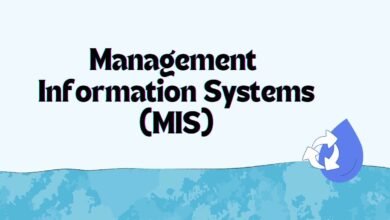Top 10 Cybersecurity Threats: How to Defend Against

Top 10 cybersecurity threats, understanding these threats has never been more critical. Let’s dive into the top 10 cybersecurity threats you should be aware of, ensuring you’re well-prepared to protect your personal and business data in 2024.
Malware Attacks
Malware remains one of the most prominent cybersecurity threats. This type of malicious software can enter your device via downloads, email attachments, or even by simply visiting a compromised website. Once installed, malware can cause a range of problems—from stealing sensitive data to taking over entire networks. The impact of malware is significant because it’s versatile. Cybercriminals can use it to infiltrate systems, damage files, or even hold your device hostage. Staying vigilant about suspicious downloads and ensuring regular software updates can significantly reduce the chances of a malware attack.
Phishing Scams: Top 10 Cybersecurity Threats
Phishing scams trick individuals into providing sensitive information like login credentials and credit card details. Cybercriminals usually send fake emails that appear legitimate to lure victims into clicking on malicious links. Phishing attacks are increasing in sophistication, making it harder for people to distinguish between a fake and a legitimate request. These scams pose a threat to individuals and organizations alike. By implementing employee training on recognizing phishing attempts and deploying email filters, businesses can minimize their exposure to this kind of cyberattack.
Must Visit: Digitzo
Ransomware Threats
This threat is particularly dangerous for businesses as it can halt operations, disrupt services, and even lead to significant financial losses. Ransomware often spreads through phishing emails, compromised websites, or weak passwords. Maintaining strong cybersecurity practices, such as regular data backups and software updates, can help minimize the risk of ransomware attacks.
Data Breaches
Data breaches are incidents where sensitive, protected, or confidential data is accessed without authorization. These breaches can expose personal information like Social Security numbers, financial records, and passwords, leading to identity theft and other issues. Data breaches often result from vulnerabilities within an organization’s security infrastructure, whether through inadequate firewalls or human error. For companies, investing in advanced encryption, strengthening access controls, and implementing regular audits can significantly reduce the likelihood of a data breach.
Social Engineering
Social engineering manipulates individuals into disclosing sensitive information. It plays on human psychology rather than technical vulnerabilities, making it one of the most challenging cybersecurity threats to prevent. Attackers might pose as a trusted source to gain access to an organization’s secure information. Social engineering tactics vary, from impersonating company executives to fake customer service calls. Training employees to recognize social engineering attempts, along with setting strict policies on information sharing, is crucial for safeguarding against these types of attacks.
Insider Threats: Top 10 Cybersecurity Threats
Insider threats occur when someone within an organization, such as an employee or contractor, deliberately or accidentally leaks sensitive information. These threats are particularly damaging because they stem from trusted individuals who have legitimate access to systems. To mitigate insider threats, organizations should implement clear data access policies, conduct regular security training, and monitor employee activities on sensitive systems. Recognizing the signs of potential insider threats—like unusual login locations or data access requests—can also help in early detection.
Distributed Denial of Service

DDoS attacks involve overwhelming a website or service with traffic to make it unavailable to users. These attacks disrupt normal operations and can lead to downtime, which can be costly for businesses. Preventing DDoS attacks can be challenging, but there are ways to minimize their impact. Organizations can use firewall protections, distribute servers across locations, and employ DDoS mitigation services to reduce the risk. Having a response plan in place also ensures that disruptions are minimized if an attack occurs.
Zero-Day Exploits
Zero-day exploits are vulnerabilities in software that are unknown to the software’s developer and are exploited by attackers before the developer can issue a patch. These exploits are particularly dangerous as there’s no available fix, and they can go unnoticed for long periods. For organizations, having a proactive cybersecurity strategy that includes constant software updates and monitoring for unusual activity can help identify and mitigate the impact of zero-day exploits. Partnering with cybersecurity experts who provide regular threat assessments can also add an extra layer of security.
SQL Injection Attacks
SQL injection attacks target databases by inserting malicious SQL code into an entry field. This type of attack is aimed at gaining access to the database, allowing attackers to view, modify, or delete sensitive data. SQL injections are particularly dangerous for websites that collect and store user information, such as e-commerce sites and online platforms. Securing databases with proper validation, using parameterized queries, and keeping systems updated can reduce the risk of SQL injection attacks. For developers, following secure coding practices is essential to minimizing vulnerabilities.
Advanced Persistent Threats

Advanced Persistent Threats are long-term, targeted attacks where an intruder gains unauthorized access to a network and remains undetected for extended periods. APTs are generally aimed at large organizations or government agencies and are often sponsored by other nations or powerful groups. Because APTs are sophisticated, they require a proactive defense approach. This includes regular monitoring, using advanced threat detection tools, and employing experts to conduct periodic security audits. Companies should also practice strict access control to limit exposure.
Conclusion
From malware to sophisticated social engineering techniques, cybersecurity threats continue to evolve and challenge even the most prepared organizations. To stay secure, it’s crucial for both individuals and businesses to stay informed, prioritize regular security assessments, and use updated software and tools. Taking these precautions can go a long way in protecting against the myriad of cybersecurity threats out there.
FAQs
What is the most common cybersecurity threat today?
The most common cybersecurity threats are phishing scams and malware attacks due to their widespread impact and ease of deployment.
How can I protect myself from ransomware?
To protect yourself from ransomware, always back up your data, avoid clicking on suspicious links, and keep your software up to date.
Why are insider threats so dangerous?
Insider threats are dangerous because they come from individuals with legitimate access to sensitive information, making them harder to detect and prevent.
What is social engineering, and how can I avoid it?
Social engineering is a manipulation tactic where attackers trick individuals into revealing information. Being cautious about unsolicited communication and verifying identities before sharing sensitive data can help prevent social engineering attacks.
Are zero-day exploits common?
Zero-day exploits are relatively rare but highly dangerous because they are unknown vulnerabilities. Staying updated with security patches and monitoring for unusual activity can help reduce exposure.
Read More: Content Creation Framework



